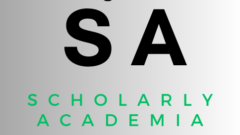COURSE:
NU643: Advanced Psychopharmacology
Overview
For this discussion, you will work in a group of two to three students to create a Pediatric Clinical Reference Tool for a disorder to be used in clinical practice and that can be shared with your peers. Please note, this discussion is not graded and is used as your tool of communication with your group.
- Each student will be randomly assigned to a group that is associated with a topic. Here is a list of the topics and their associated groups:
- Topic 1: Generalized Anxiety (Group 1)
- Topic 2: Depression (Group 2)
- Topic 3: Bipolar Disorder (Group 3)
- Topic 4: Autism Spectrum Disorder (Group 4)
- Topic 5: Obsessive Compulsive Disorder (Group 5)
- Topic 6: Schizophrenia/Psychotic Disorders (Group 6)
- Topic 7: Aggression (Group 7)
- Topic 8: Addiction (Group 8)
- Once you are placed in the groups, you can use this discussion forum to determine which method you will use to communicate within your groups. You may use Zoom, email, phone, or any other agreed upon method.
- Within your group, complete the Pediatric Clinical Template (PDF) to answer the following questions:
- How does the topic present in children and, if applicable, how does that presentation differ in adults?
- What are the treatment recommendations for children? Adolescents? (Use available resources including but not limited to linked treatment guidelines, The Carlat Child Psychiatry Report, UptoDate, etc..
- Which treatment recommendations are off-label? FDA approved?
- What are the relevant safety issues? (This may include risks associated with the topic or with the treatment.) Do these safety issues differ from adults?
- Your response should include evidence of review of the course material through proper citations using APA format.
- Check with the Pediatric Grading Rubric for evaluating your Pediatric Clinical Template.
- When the group assignment is complete, select one group member to upload it to the Week 11 Discussion 1: Pediatric Clinical Reference Tool for your peer discussion. Please ensure that all group members are listed on the Pediatric Treatment Reference assignment so that everyone in the group will receive a grade for the submission.
Note: You will also need to individually submit the Pediatric Clinical Template (PDF) in Week 11 Assignment: Pediatric Treatment Reference.
SOLUTION
| Child | Adolescent
(Ok to type “same as a child” if appropriate) |
Notable differences from
adults (If applicable) |
|
| Description of the Disorder in Pediatric Populations | The disorder is characterized by excessive and uncontrollable worry about various issues. The physical symptoms include headaches, muscular tensions, heart palpitations, headaches, and stomach problems. Some risk factors that cause the disorder include school performance, sporting events, social acceptance, perceived shortcomings, personal safety, and family safety (Sapra et al., 2020). Causes of the disorder include genetic factors, exposure to biological factors, temperament problems, and environmental stimuli. | Same as child | The prevalence of generalized anxiety disorder is lower based on the increased ability to vocalize anxiety and recognize fears and worries. The adult brain is also more developed and mature than in children and adolescents; thus, it can better cope with anxious feelings. Additionally, the disorder’s symptoms are lesser pronounced in adults and also less frequent. |
…………………………$5
